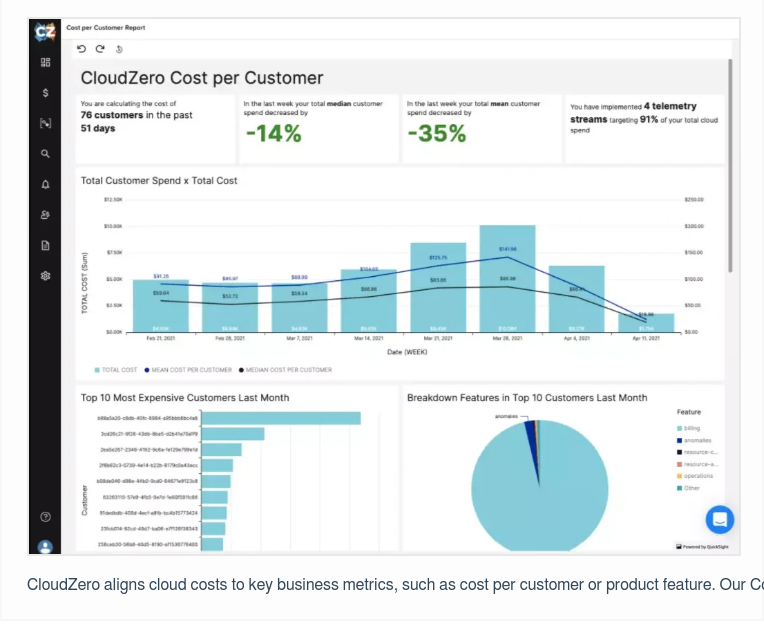Business leaders and team members face countless decisions every day, some of which are certain to have an impact on the future of a company. Perhaps the most impactful to a SaaS company’s bottom line are financial decisions related to the cloud.
In 2025, cloud complexity has escalated — multi-cloud architectures, AI/ML workloads, and sustainability requirements are driving new cost dynamics. The need for a disciplined cloud cost analysis has never been greater.
Engineers and team leads need to know which cloud architecture choices are worthwhile and which should be scrapped in favor of a more cost-effective model. This can be accomplished through a cloud cost analysis that takes an in-depth look at how each design and architecture decision impacts costs.
From deciding how to price product packages to reining in an out-of-control budget, you may have any number of reasons for wanting to analyze costs. The following framework will help a cloud cost analyst perform a cost analysis for several common SaaS scenarios.
What Is A Cloud Cost Analysis?
A cloud cost analysis is the process of identifying, attributing, and evaluating cloud spend across services, teams, or features to improve decision-making and margin efficiency. It combines goal-setting, metric tracking, and context interpretation to inform financial and architectural choices.
This is a key step in FinOps, and is practiced for good reason. According to the FinOps Foundation’s 2024 State of FinOps Report, reducing waste and optimizing commitment-based discounts are the top priorities for cloud financial management teams.
Meanwhile, Deloitte predicted organizations could save up to $21 billion in 2025 by implementing effective FinOps tools and practices, including cost-analysis disciplines.
A framework for cloud cost analysis would involve three essential components:
1. Determine The Goal Of Your Cloud Cost Analysis
What questions do you need to answer to improve your business decisions?
Knowing your goal ahead of time will help you determine which metrics are important to track and how to put your information into context so each team member understands the impact of their choices.
- How much is the business spending in total?
- How much are we spending on individual items?
- Have we priced our products appropriately?
- Are we losing money on any particular services?
- Do costs scale proportionally as the business scales, or are margins better at one end or the other?
- Do the costs and benefits make sense to complete a particular project?
- Why has the bill grown lately? Is it because we have more customers and the business is growing, or is it because something about the platform is not architected well and needs to be redesigned?
- Do we need to create a new budget based around differences in engineering teams or product lines?
These questions will be your guide as you begin to dive into the details.
2. Gather The Relevant Information
If you have bills and spreadsheets with raw data, that’s a good starting point.
You may want to track and compare metrics such as:
- Cost per customer
- Ongoing maintenance/operating costs per feature or product
- Startup costs for researching and developing new products
- Projected revenue per product
- Cost of onboarding new customers
- Customers gained from free trials
- Number of each type of transaction happening on your platform
- Cost per transaction
These are some common examples, but you may have other metrics that are equally or more important to track based on your goals for the analysis.
3. Fill In The Context
It won’t be very meaningful to know the exact dollar amounts you are spending on particular services if you have nothing to compare the numbers against.
If you find that you’re spending an average of $10,000 per month on EC2 costs, for example, what does that actually mean? It’s the context surrounding the metrics you have tracked that paints the big picture.
It may be helpful to compare each variable against the others.
As another example, if your goal was to determine if your costs scale appropriately with business growth or whether some services need to be adjusted to be worthwhile, you may plot the related data (cost per customer, cost per feature, and overall revenue over time) on a chart to establish a correlation.
- Does your cost per customer increase or decrease with the number of customers you sign on?
- Do customers with heavy usage cost proportionally more in comparison to the revenue they bring in than light-usage customers?
- Do certain features cost more for particular customers than for others?
These are the types of insights you can use to guide future design and engineering decisions.
However, it can be difficult to answer your original “goal” question and find meaningful data without the right tools at your disposal.
Many companies simply don’t have a way of itemizing costs or discovering which services contribute the most to spending.
With Amazon’s Cost Explorer, it’s possible to see from your AWS bill how much you are spending toward different services like EKS or Lambda. But beyond that rough breakdown, gaining further visibility into what money is going where is tricky — if not impossible. This is where a cloud cost intelligence platform can be a huge help.
CloudZero’s platform was designed to help you track cost metrics that make sense for your business. Our tagging and cost analysis solutions break down unit costs so that you can fill in the big picture as you see fit.
When the time comes to analyze your costs, you will already have a large piece of the puzzle put together with current and future data. Armed with this insight, it is much easier to perform cost analyses in more depth and with greater precision than you could if you were starting from nothing.
 to see how real-time cost intelligence could change the way you make decisions for your business.
to see how real-time cost intelligence could change the way you make decisions for your business.









